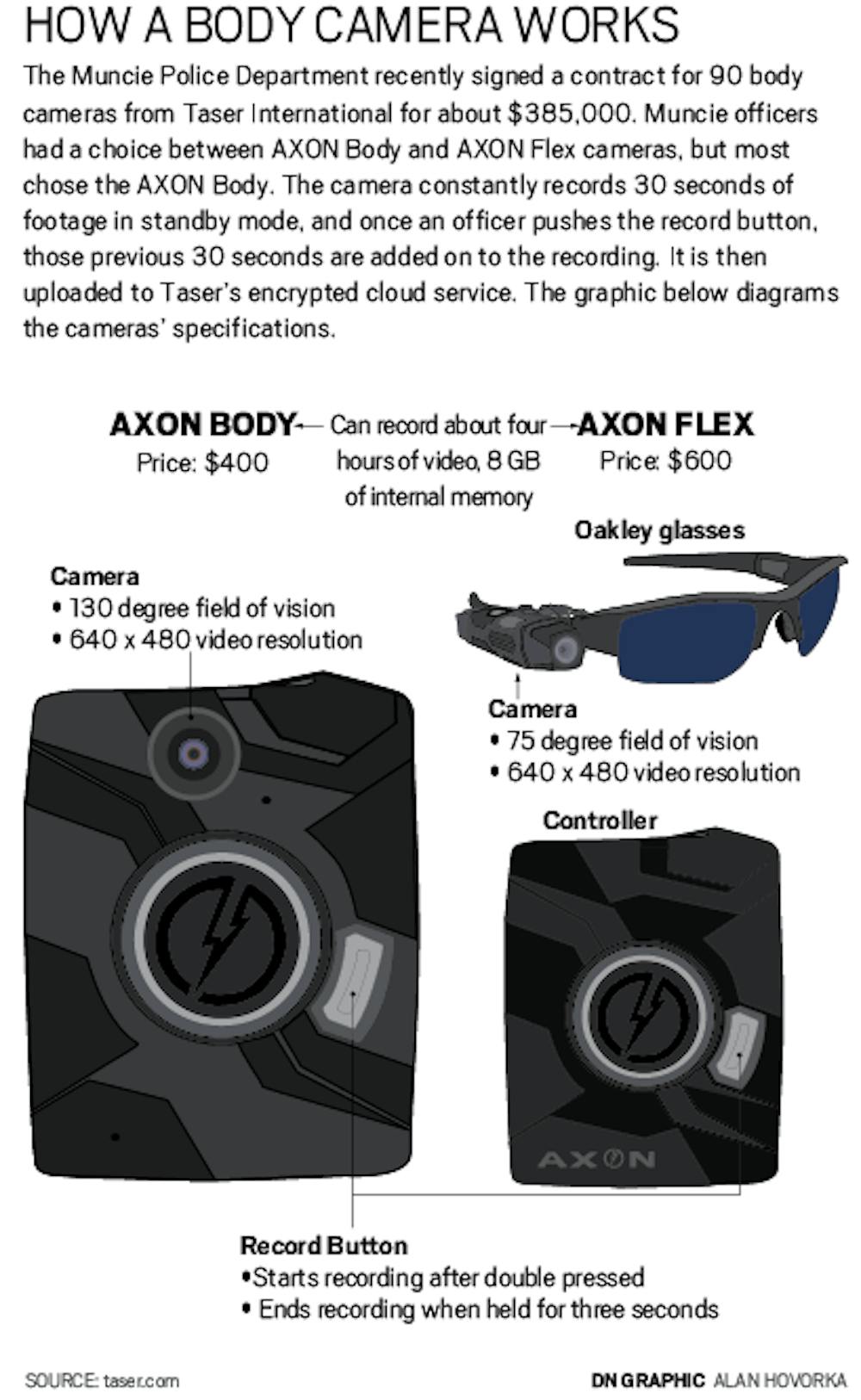In about four months, Muncie police officers will add body cameras to their arsenal.
Taser International, based in Arizona, will supply 90 body cameras to outfit the Muncie Police Department at a total cost of $385,392.96. The Muncie Redevelopment Commission is paying for this contract. Muncie police will seek grants to offset some of the cost.
The redevelopment commission awarded the bid to supply Muncie’s body cameras to Taser International in early March over Digital Ally of Kansas. Their contract with Taser will last for five years at $77,040 per year.
“We don’t have the personnel to manage 90 videos every day. We have to have a way to do that and make it user-friendly. That’s what Taser does,” Steve Stewart, Muncie police chief, said.
Stewart said the department is getting body cameras to protect officers from lawsuits and to hold officers and citizens accountable in following the law.
"The prosecutor has shared with me that juries are asking for video and we don’t have any,” Stewart said.
The wide use of recording police interactions through body cameras could encourage accountability, said Bryan Byers, professor of criminal justice and criminology.
“Accountability is a big plus on the police side and protection for the police and citizens as well. If it is on camera, it is going to be [more] accurate… [than] what you would get in memory and recollection,” Byers said. “There are a lot of positives associated with them.”
In a December 2014 Pew Research study, 87 percent of Americans said that “more police officers wearing body cameras to record interactions would be a good thing.”
That statistic changes based on ethnicity and party affiliation. Among the White demographic, the number is 85 percent versus 90 percent and 89 percent among the Black and Latino demographics.
Among Republicans, 79 percent say it would be a good idea versus Democrats and Independents at 90 percent and 88 percent.
A 2014 study from The Journal of Quantitative Criminology details the 12-month trial in Rialto, Calif. where body cameras were found to reduce police use of force by about 50 percent. Also, complaints against police dropped by about 90 percent during the study period compared to the previous year. The body cameras used in this study were from Taser International.
Last December, President Barack Obama proposed an investment of $263 million for training and resources for police. Seventy-five million would be used for body cameras.
Locations of departments and agencies with Taser International body cameras
Muncie’s cameras come free with the city’s contract with Taser. The city will spend the $385,000 to implement the infrastructure and support to use the body cameras, and in return will receive the body cameras. The cameras themselves range from $400 to $600 each.
The set-up of the camera system will take about four months. The 90 cameras will require 15 six-bay docking stations to charge the cameras and upload their video.
“It’s not the cameras that are expensive. It’s the infrastructure. It’s the storage of all that video. It’s the licenses to use a web-based, encrypted service to store that video and retrieve it. That’s where the expensive part comes in,” Stewart said.
The videos are managed by Taser’s cloud service Evidence.com and their contract allows for maintenance and warranty. The cameras will be replaced at the two and a half- and five-year marks to ensure the department has the most up-to-date gear, said Vince Valentine, regional sales manager for Taser International.
The cameras will be phased into the department in waves of about 20, Stewart said. Phasing the cameras in allows for the department to acclimate to an altered work flow.
This summer deployment means most Ball State students won’t see the cameras until next academic year.
Muncie isn’t the only department in Indiana using Taser cameras. According to a list of 203 departments from Taser International, the Kokomo Police Department uses 70 Taser body cameras.
Taser has sold cameras and services to 2,500 agencies and more than 30,000 cameras. Steve Tuttle, Taser International’s vice president for strategic communications, said they are located in 16 of the 34 major cities in the United States. A major city has a population more than 500,000, he said.
Byers encourages skepticism when dealing with body cameras because the technology is new. The effects of body cameras are not completely understood.
“Until we measure the effectiveness of the technology we won't know what problems they will solve in the criminal justice system, and any potential harms,” Byers said. “There needs to be other studies to replicate ... findings.”





